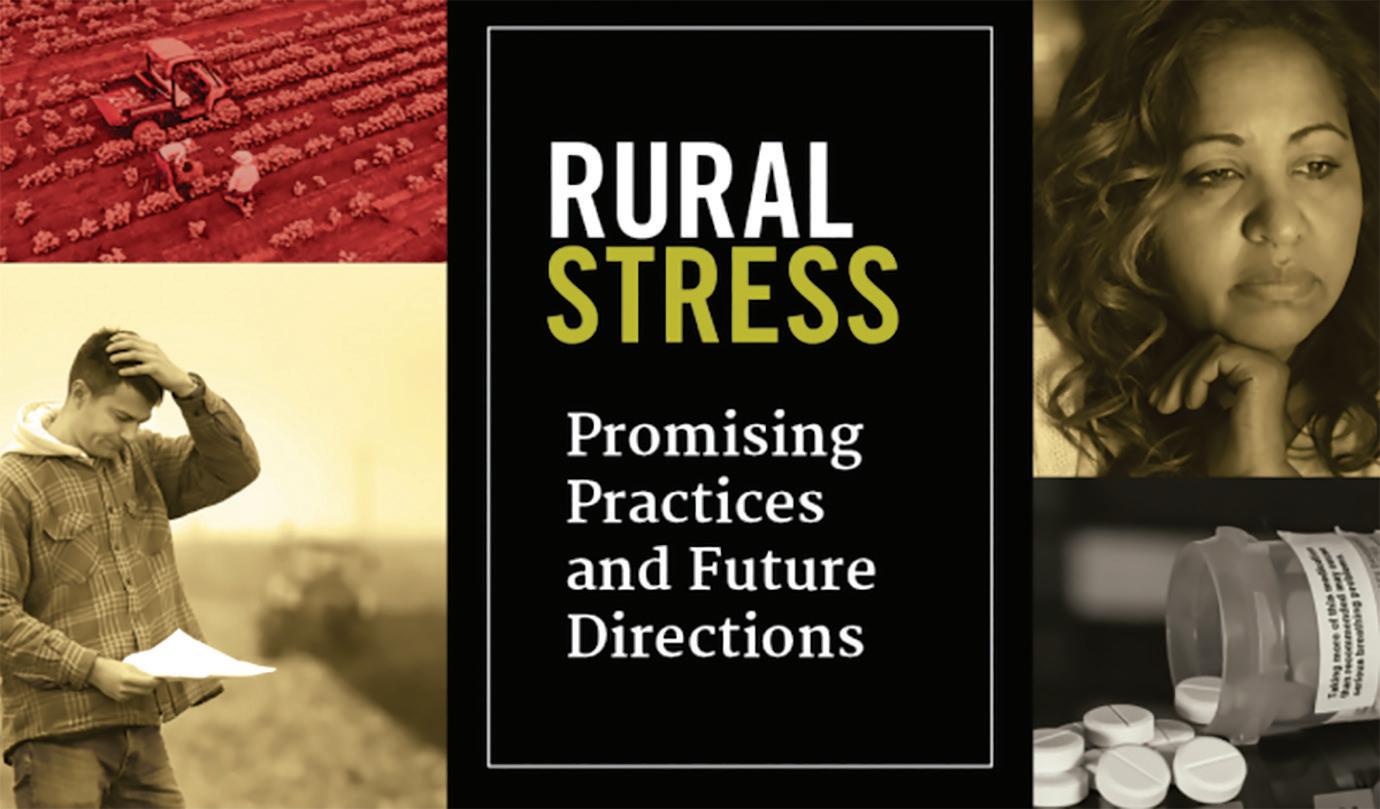
9 minute read
Stressing Mental Health
Resources tailored to farmers’ needs are available.
By Amanda Huber
Soldiers returning from the Gulf War and Afghanistan during the past two decades brought a new group of words to our lexicon: post-traumatic stress disorder. More recently, there has been a dramatic increase in suicides from first responders. In the past few years, with rock-bottom crop prices and after the devastation of Hurricane Michael, the topic of rural stress has also come into view.
Rural Stress In Focus
University of Georgia Extension peanut specialist Scott Monfort and other members of the peanut team are making special mention of this topic in production meetings this spring.
“We know your job is one of the toughest and most stressful jobs out there,” he says. “Unfortunately, in the past few years, we have lost some good farmers, and it is likely partly due to stress.
“The University of Georgia is making new resources available through the Extension service,” Monfort says. “UGA wants to be here for you in every aspect of farming, not just production.”
So Much Out Of Your Control
In a survey of farmers attending the
Georgia Farm Bureau 2019 annual convention, UGA School of Social Work professor Anna Scheyett sought to better understand farmer stress. Although the data was collected informally and 118 surveys were completed with more women answering than men, Scheyett found that stress is high among farmers in Georgia. Getting information on stress and suicide to farming communities is critically important. She also found that ensuring the information is provided in ways that are acceptable and accessible is crucial.
According to the survey, the top five stressors were weather at 71.93%; finances, 33.33%; commodity prices and sales, 28.95%; farm operating costs,
Rural Stress Resources • Contact the National Suicide Prevention Lifeline at 1-800-273-TALK (800-273- 8255) or use the online Lifeline Crisis Chat. Both are free and confidential. You’ll be connected to a skilled, trained counselor in your area. • For immediate crisis help, call the Georgia Crisis & Access Line (GCAL) at 800- 715-4225, available 24/7 toll-free; staffed by licensed mental health professionals. Language assistance is available. • The Rural Georgia: Growing Stronger website at https:extension.uga.edu/rural for a collection of articles, resources and programs to assist producers with issues from maintaining good mental and physical health to juggling economic, educational or lifestyle concerns.
27.19% and government: legislation, regulations and aid, 19.30%.
Reaching Out
Scheyett also found that providing education through social media, newsletters and magazines would be an easy and effective form of outreach. Additionally, building on the trusted relationships farming communities have with their local Extension offices and providing classes at these familiar locations could be an effective information dissemination strategy.
“Farming is the only profession I can think of where you can do everything right and work 24/7 and make all the best decisions and have all the best equipment and still go bankrupt,” Scheyett says. “There’s so much out of your control.”
Although rural life is often portrayed as a slow-paced, idyllic lifestyle, farmers, and, by extension, their communities, face daily adversity and challenges. A lack of resources in small towns only adds to the feeling of isolation, as do the unique challenges faced by producers. As this crisis in farm country comes into focus, more help is being made available. PG
In The Furrow Take advantage of this opportunity to give your crop the best possible start.
By Amanda Huber H ow many opportunities do you get to put products in furrow that will protect the peanut seed? You get one chance, says Bob Kemerait, University of Georgia plant pathologist.
“Once you close that furrow, many of your opportunities are gone. It can be insurance or a missed opportunity. Base your decisions on the risk you are willing to live with.”
Start With Quality Seed
University of Georgia Extension peanut specialist Scott Monfort says there are a lot of options for insecticides, fungicides and inoculants that will help the seed get off to a good start and protect seedlings. However, there are also a lot of sales pitches to put other products in the furrow that may or may not work. So what is needed in the furrow, and what is not? “Start with good quality seed,” Monfort says. “Also, know the germination of your seed because if you don’t, you won’t know how to adjust the seeding rate to get the desired stand. “Tomato spotted wilt virus has been increasing in the past few years, and we saw a big spike last year. One reason is that we are planting a lot earlier. If TSWV keeps increasing, it will cause more yield loss and may end up backing up planting dates to the middle of May when the Peanut Rx risk index shows there is less susceptibility.
“Producers should also choose a variety that has a good disease package and more tolerance to TSWV,” he says.


In The Furrow
What Goes In? • Good quality treated seed • Inoculant • Insecticide • Fungicide • Nematicide
What Stays Out? • Fertilizer or any fertility product


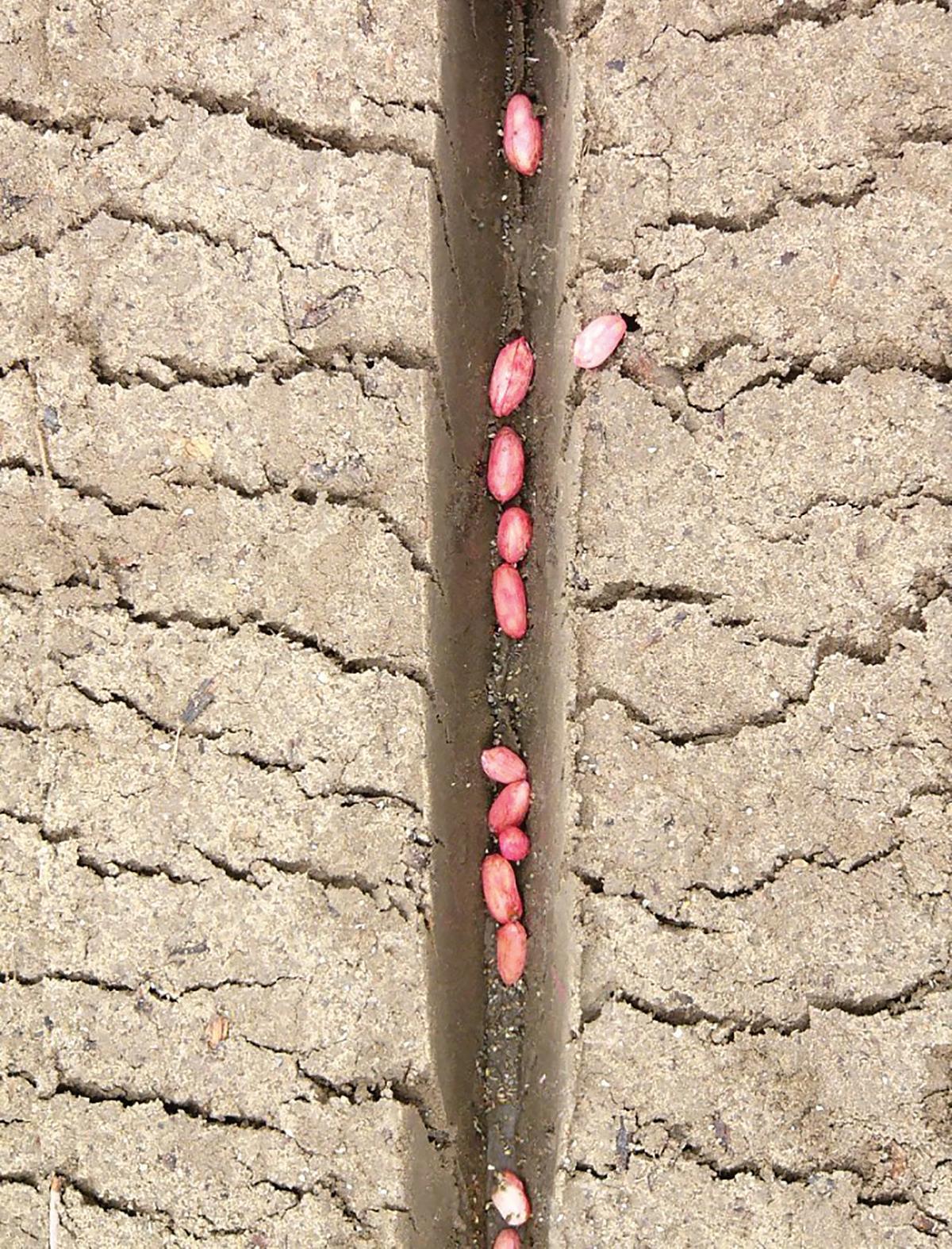
Nitrogen-Fixing Boost
Whatever the variety choice, Kemerait says to never plant a peanut seed that doesn’t have a seed treatment on it.
“Seed treatments are the first line of defense against seedling diseases such as Aspergillus crown rot and Rhizoctonia, and also against nematodes. Protecting against skippy stands created by these seedling diseases also helps with TSWV.”
UGA cropping systems agronomist Scott Tubbs says inoculants are another important input to put in the furrow.
“Apply inoculants in fields that have been out of peanut for more than five years. However, it is a good practice to apply inoculants each year, especially following years of extreme weather like prolonged hot, dry periods or extended water-logged soils.”
Applying an inoculant to the seed in furrow ensures that peanut-specific bacteria are available and ready to colonize seedling roots so the plant can begin fixing nitrogen quickly. It is yet another step in getting a good, uniform stand.
In-Furrow Insecticide
Another reason TSWV is increasing, according to Monfort, is related to insecticide use. At-plant insecticides are recommended by the UGA peanut team, including Extension entomologist Mark Abney, as a good investment against thrips.
“Some insect pests are a certainty every year. Every year, there will be thrips and caterpillars in


HAVE CONFIDENCE THIS SPRING.
DeltaForce ® controls weight for consistent emergence.
vDrive ® simplifi es your drive system and eliminates maintenance headaches
You shouldn’t have to wonder what your peanut stand is going to look like. You can have confidence in your planter.
DeltaForce®, vDrive®, and Precision Planting® are registered trademarks of Precision Planting LLC. ©2019 Precision Planting LLC.
peanut fields. I feel strongly that an at-plant insecticide for thrips is a good investment. However, not every field needs to be treated for insects after planting.”
Which at-plant insecticide should producers use? Monfort says, “If you are planting in late April or before May 10, we would rather you use Thimet (phorate). I know some growers don’t like putting it out because of the difficulty, but it is the only thing that suppresses the virus.”
“Thimet is the only insecticide that reduces the risk of TSWV,” Abney says. “However, if you put imidacloprid in furrow and you’re happy with that, and you are seeing only 5% TSWV, I’m not going to try to convince you to do anything different.
“But I want you to be aware that you are at a higher risk for TSWV than you would be if you used Thimet in-furrow.”
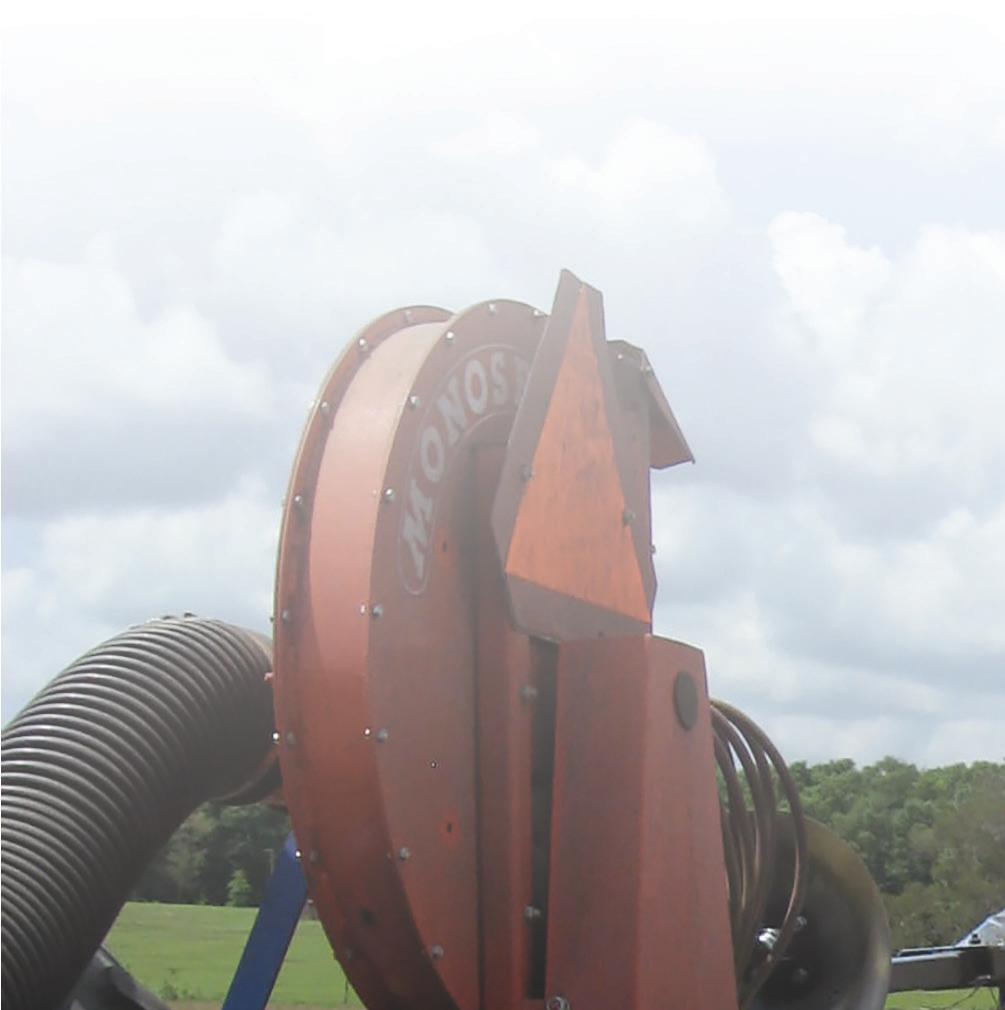
In-Furrow Fungicide Options
An in furrow fungicide is also an option, and Kemerait explains when to use these crop protection products.
“If you have had trouble getting a stand in the past, if there is a concern, ‘is my seed going to be good enough even with the seed treatment,’ then azoxystrobin or Abound in-furrow is recommended.
“Cylindrocladium black rot is also starting to come back a bit. If you have had CBR in the past, consider Proline in furrow. You only have one good chance to fight CBR, which can be seed transmitted but also stays on residue in the field. It is almost impossible to control during the season. Once it shows up, Proline in-furrow is the best option.”
At-plant nematicides are also an important in furrow addition. “Velum Total is an at-plant nematicide that also has some fungicide properties. It will also give some help with leafspot mangement,” Kemerait says.
AgLogic brand aldicarb is another at-plant product for use on nematodes and early thrips pressure.
Kemerait wants producers to know that in-furrow fungicides are only a complement to seed treatments but do not replace them.


What Does Not Go In The Furrow?
Monfort says nearly every year he gets a call about a stand problem that can be traced back to something being put in the furrow that does not belong.
“We put a lot of stuff in the furrow. What should never go in the furrow is fertilizer of any kind, whether it is a biological stimulant or not. If it’s hot and dry and you have limited moisture, you will kill the seed.”
Take the opportunity at planting to get the crop off to the best start possible with good quality treated seed, inoculants and in-furrow pesticides. Consult an Extension agent or specialist for use of at-plant products not included in Peanut Rx or the UGA Peanut Production Quick Reference Guide. PG
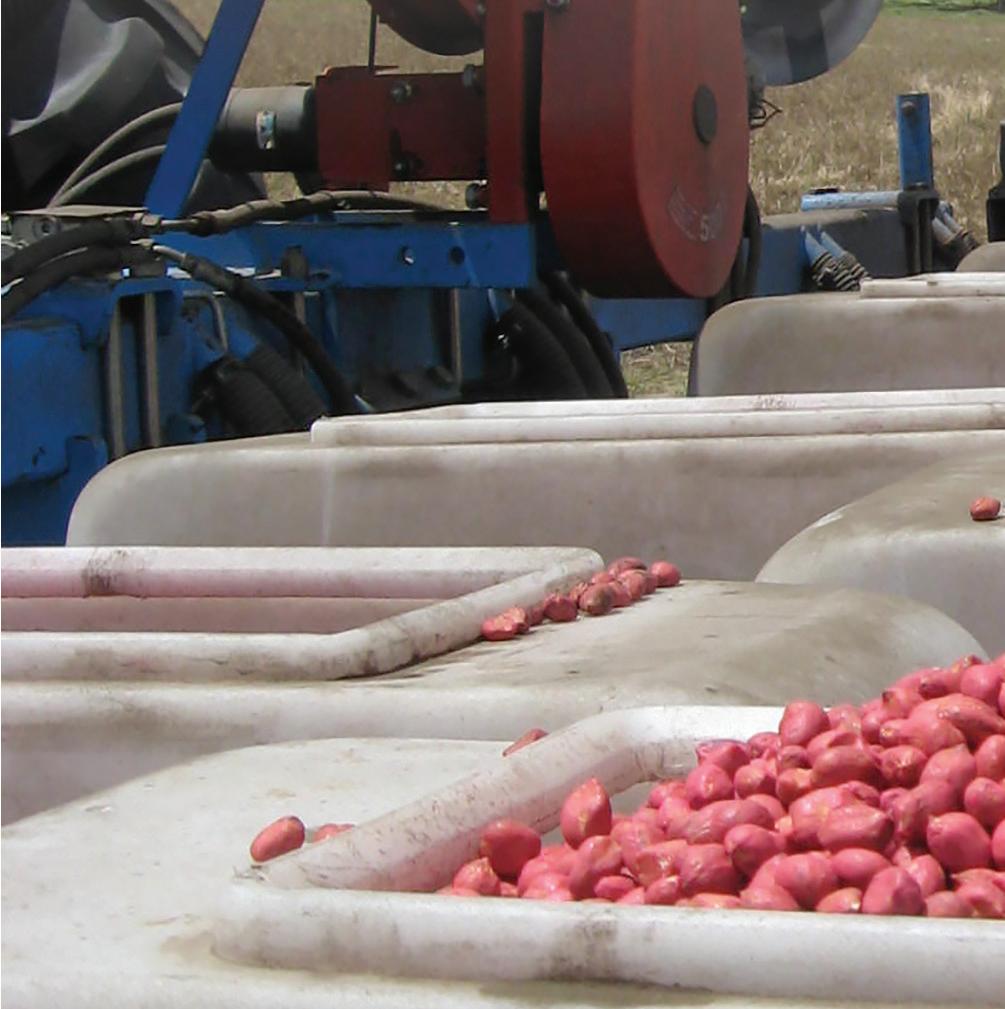


We succeed when you succeed.
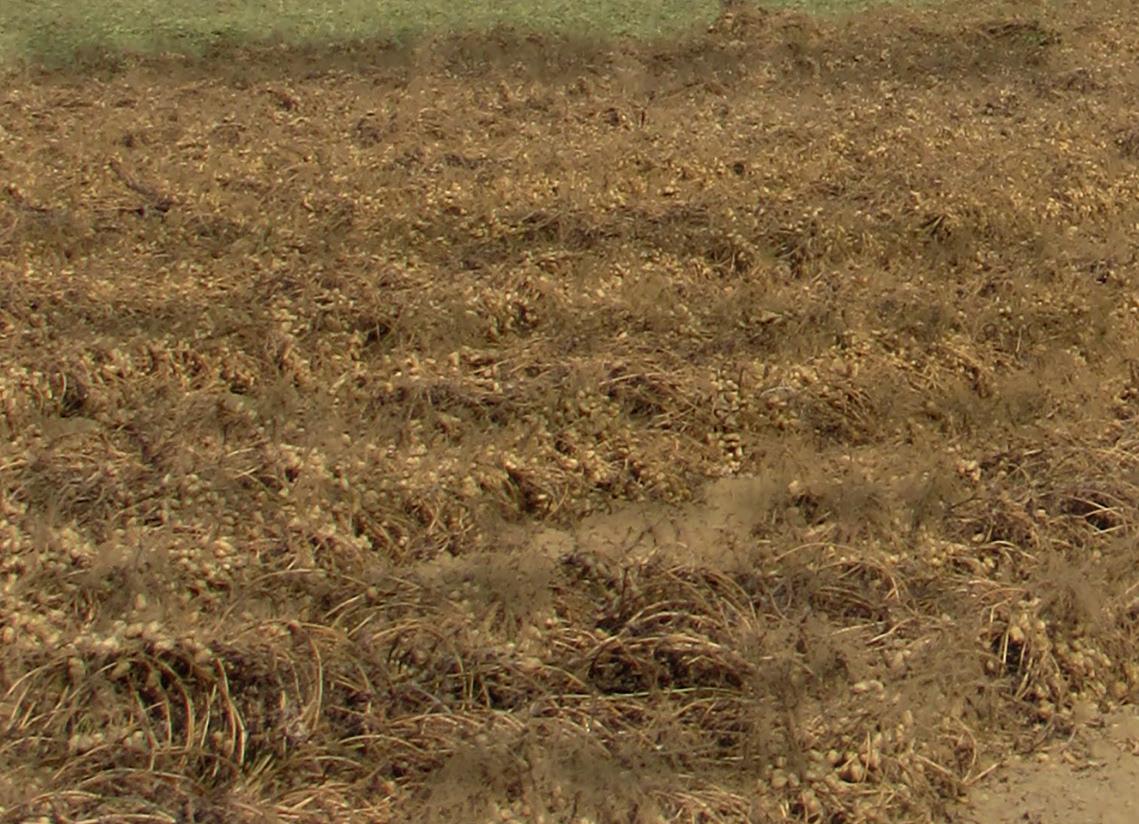

Our team of industry veterans works tirelessly to bring our readers the most up-to-date information straight from the fi elds. You can count on us at The Peanut Grower to continue to provide profi table production strategies for your operation.

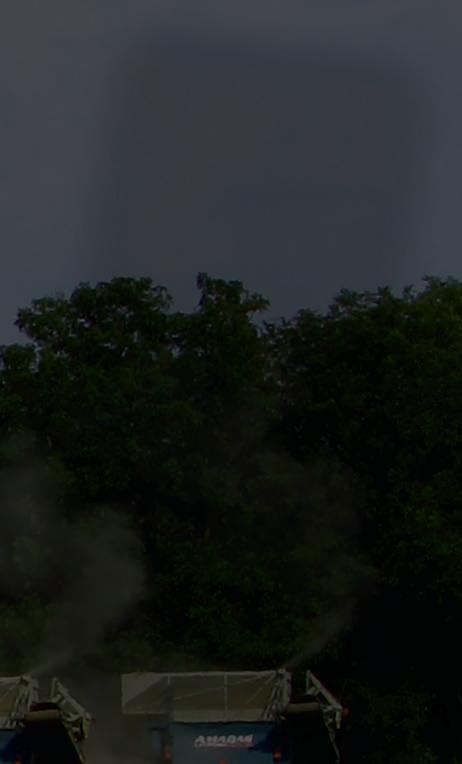
We’ll keep you informed, wherever you are.
Receive a recap of important stories, calendar of events, YouTube videos, photos and informative updates delivered directly to your inbox by subscribing to the monthly E-news.
Subscribe today! Visit www.peanutgrower.com and look for the Peanut Grower E-News sign-up block on the home page.
www.peanutgrower.com
@PeanutGrower
ONE GROWER PUBLISHING, LLC



